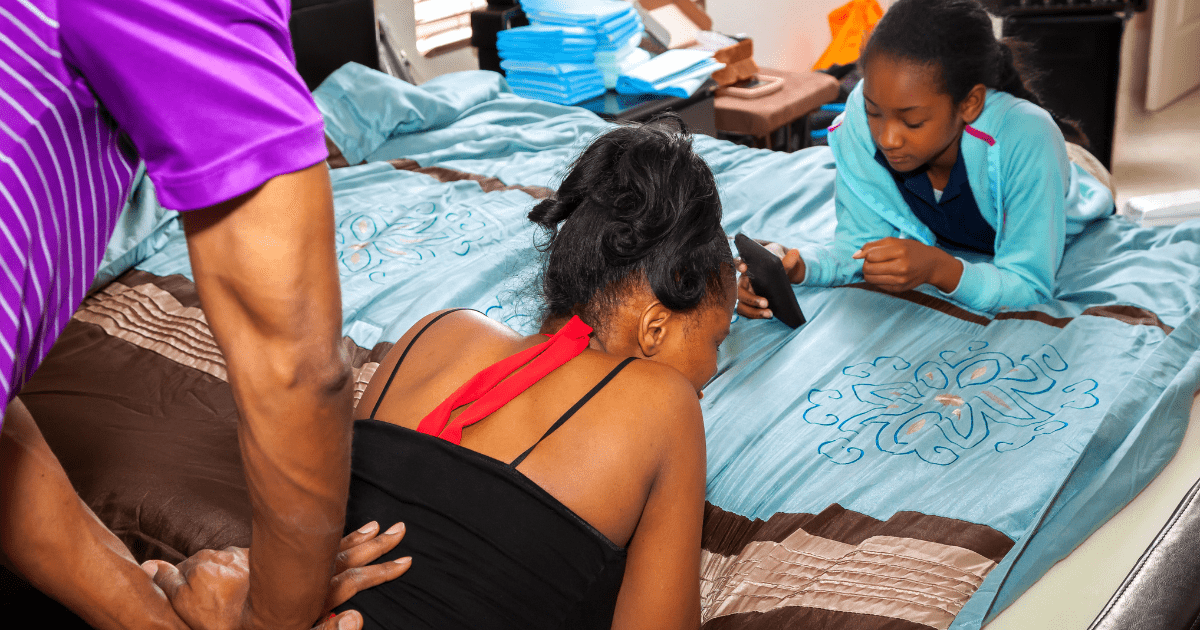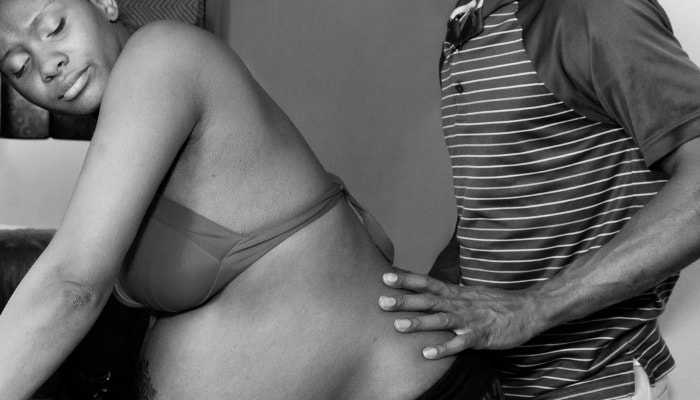How to Use a Birthing Ball for a Better Birth
A birthing ball is an exercise ball that helps ease pregnancy symptoms, but can also encourage a less painful more straightforward birth. It’s a must-have for every pregnant woman hoping …
I LOVE teaching pain management for labor! When parents explore labor pain, they ultimately discover a greater capacity within themselves for pain coping. This realization leaves them feeling more empowered and confident about their upcoming births. It’s exciting to watch!
When I was a sassy teenager, I once told my mom that when I got older and had babies, I would be getting an epidural. It didn’t make sense why someone wouldn’t get one! To me, it seemed like a get out of jail free card.
Looking back, I didn’t understand 3 things:

Labor pain is an inevitable part of childbirth, but there are many techniques and strategies available to help manage and reduce discomfort. By understanding options ahead of time, parents are better able to make informed choices throughout the birthing experience.
Before we skip to getting through labor without an epidural, it’s important to understand each stage of labor.
The first stage of labor is where women will spend most of their time and is broken up into three parts:
After that comes pushing, and then the birth of the placenta. Easy as pie, right? Through all of these stages and parts of labor, women want to know what their contractions will feel like, the best pain coping strategies for each, and tips for natural birth.

A basic, easy to learn pain coping strategy for labor is what I call breath awareness – a labor breathing technique. It’s simple, easily learned on the spot, and extremely effective for labor pain.
Believe it or not, it’s even more effective when the eyes are kept open. It’s even more effective pairing it with connection with a loving partner!

Some parents don’t want to birth at home, but rather labor at home as long as possible before heading to the hospital. In addition to breathing techniques, there are many effective pain management options when laboring at home, like using a birthing tub, massage, counter pressure, and other birthing tools. Here are some more ideas!
While contractions build at home, make sure to make the most of the time between contractions – relax, drop the shoulders, take a sip of water, eat a labor snack, rinse and repeat. It’s important to prioritize rest, especially in early labor.
One of the most surprising struggles first time moms report is exhaustion, especially in transition and pushing. Anything parents can do to prioritize rest in the earlier stages of labor will be much appreciated later on.

An effective pain management for labor strategy is freedom of movement and position changing. When women move instinctually throughout labor, they choose positions than decrease pain, but interestingly enough, also help labor progress.
Women choose positions off their backs, which allows gravity to help labor along. Being off one’s back also encourages the full range of movement in the pelvis, creating the most space for baby’s exit.
The 5 most popular birthing positions for reduced pain and length of labor are:

Another pain management for labor strategy is the use of birthing affirmations, words of encouragement, and reminders of what is normal.
“An hour ago you didn’t feel hot and cold, shaky, and weren’t vomiting. I know right now it seems like things aren’t going well, but these are actually signs that we are getting closer to pushing. You’re doing it!”

There are many options for pain management in the hospital. Much of what was possible at home is still possible. It’s 100% possible to have an empowered natural hospital birth!

Labor can be pretty unpredictable, and it’s helpful to be familiar with variations of normal labor. Here are Mother Rising’s “how to’s” for the hardest parts of labor.

The following are Mother Rising’s posts all about pain management in labor.
A birthing ball is an exercise ball that helps ease pregnancy symptoms, but can also encourage a less painful more straightforward birth. It’s a must-have for every pregnant woman hoping …
It is 100% possible to get through transition without an epidural! This article is FULL of wonderful information about how to do just that. Let’s go! What is Transition? Birth …
Many women in my childbirth classes and those that hire me for doula support often ask for tips on how to labor at home as long as possible. In fact, one …
The right birthing ball size will help pregnancy aches and pains, but also encourage labor progress. However, not every woman will use the same size ball. Use this guide to …
The fear tension pain cycle reveals how all three feed off each other creating an ever increasingly painful birth. This cycle is something parents need to understand when learning about …
In my childbirth classes one of the ways we prepare for labor is by holding ice. I realize this may sound super strange, but I’ve found it to be an …
IV pain meds in labor are the go-to epidural alternative for parents looking for a less invasive pain medicine. In my experience as a doula, IV pain meds in labor …
One of the best tips for early labor is to prioritize rest in order to avoid exhaustion in the later stages of labor. Why is prioritizing rest important? First time …
The disadvantages of HypnoBirthing are often unknown to new parents simply because of a lack of exposure and experience with the method. As a doula and birth assistant, I attend …
Mother Rising’s beautiful, free birth affirmations encourage and strengthen parents as they navigate through one of the most wonderful and difficult journeys of their lives. The heart expands with love …
I wrote these thoughts on suffering in labor during March of 2017, but for whatever reason never published it. I just read it again, 6.5 years later and, interestingly enough, …
If you’re anything like me, you likely grew up learning about childbirth through watching movies, hearing birth stories from our mothers, and maybe from a smattering of other people like …